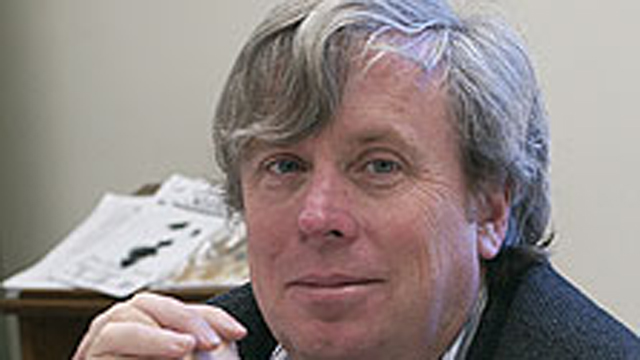Cool stuff from AGU 2010 Days 3 and 4: Serendipity strikes Iceland and the evolution of Hawai`i

I’ve now made it back from another great yet exhausting American Geophysical Union meeting. I was able to get some samples that I need for my research, set up some new collaborations for the future, see some excellent talks/posters and most importantly, meet (and re-meet) a lot of people. I’m especially excited to meet some of you Eruptions readers, lurkers and active commenters like Birdseye and R Simmon (from the NASA Earth Observatory) – along with a bunch of other geobloggers like Chris Rowan, Anne Jefferson, Brian Romans, Jessica Ball, Cian Dawson, Callan Bentley, Maria-Jose Vinas (AGU press officer extraordinaire) and many many more. And a special thanks to all of you who commented about the value of the user community and comments on Eruptions – everyone was impressed with how much thought you put into it and how involved you are. Kudos all around! There is a lot of exciting things to write about in geology and AGU just drives that point home.
So, some final highlights from my Days 3 and 4 at the meeting:
Eyjafjallajökull: I found myself drawn to a lot of the Icelandic talks and posters (odd, eh?) One that was particularly compelling was a poster by B. Oskarsson on the Skerin Ridge on Eyjafjallajökull, a prominent ridge that protrudes out of the ice cap (mostly) on the northwestern side of the volcano. Oskarsson was studying the volcano in 2008, looking at ice-contact volcanism but then he noticed some interesting things about the composition of the ridge that formed in the 10th century – namely, it was a primitive basalt far away from the summit and became more silicic as the deposits moved closer to the summit crater on Eyjafjallajökull. He found clear evidence that the basalt and silicic tuffs were erupting at the same time as well. If this all sounds familiar – a basalt on the periphery of Eyjafjallajökull with a more silicic magma erupting near the summit – that is because it is what is believed to have happened in 2010. The current idea is that basalts interacted with silicic crystals in the volcanic edifice, so under the volcano, you get mixing and on the edges, where there are no crystals to interact with, you don’t get mixing. This, my friends, is what we call “serendipity,” where Oskarsson’s research just happened to be on a feature that proves that the 2010 eruption was not unique in its products at Eyjafjallajökull.
Aircraft and ash: I didn’t get to see nearly as much as I wanted to about how our understanding of the hazard ash poses to air travel has changed – there was an entire session on the subject of ash cloud from Eyjafjallajökull and a talk on the subject during the “Looking Backward and Forward: Volcanology in 2010 and 2020” session (which I sadly missed to be on the science blogging panel). However, I did see a poster by M. Guffanti that had two tidbits: (1) the way the VAAC’s model ash movement and how they portray it is likely to be changing and (2) there is a new (free) USGS publication that documents all the known ash-aircraft interactions from 1953-2009 – definitely some good reading if you are interested in the subject.
Hawai’i: Finally, in a little more of a petrologic bent, I saw a poster by Jorge Vazquez, a USGS scientist who works on dating zircon and other trace minerals, that details the evolution of two of the lesser-known Hawaiian volcanoes, namely Hualalai and Mauna Kea. There is a progression in the style of volcanism for Hawaiian volcanoes as the Pacific Plate moves over the hotspot that generates these volcanoes. Kilauea and Mauna Loa are in what we call the “tholeiitic phase” (also known as “shield phase”), named after the type of basalt erupted, that is the also the most productive time for a Hawaiian volcano when the hotspot is directly below. Haulalai and Mauna Kea are in the “alkalic phase” (again, named after the type of basalt but also called “post-shield”) that happens as the last gasps of melting to form magma occurs underneath the volcanoes before they go extinct. Dr. Vazquez has found, by examining zircon from the chunks of gabbro and diorite (intrusive rocks) coughed up in eruptions at Hualalai and Mauna Kea, that the transition from tholeiitic to alkalic might be a much longer process than we previously thought – or that the hotspot plume under Hawai`i can undergo rapid and dramatic changes in composition over time. This study is a little more removed from volcanic hazards, but it does show how even in places that we think we understand, like Hawai`i, that new discoveries are continuing to change our models for magmatism.
There are many, many more posters and talks that were fascinating as well, but alas, there were only so many hours in the day. Some of the talks I wish I hadn’t missed included one by Jonathan Castro (who did a Q&A on Eruptions) from Monash University about Chaiten where he documented how the eruption was but explosive and effusive simultaneously. I also missed a look back (and forward) at submarine volcanology that I’m sure was quite interesting. That is the nature of these meetings – you definitely can’t get to everything you’d like. Now, I just need to recover from the meeting.
Next week, I’ll be back on task looking at what is actively going on in the world of volcanoes, along with finally posting the answers to your questions posed to Dr. Adam Kent. We also have the 2010 Pliny coming up, so I will likely open it up for nominations next week to find out who will follow 2009 winner, Sarychev Peak.
Until then, enjoy the weekend (which I will be spending with a grading marker attached to my hand).
Top left: The summit area of Hualalai volcano, Hawai`i.





